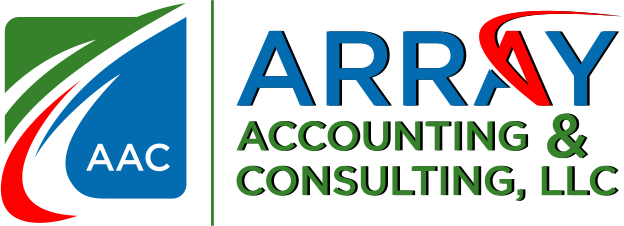Array Accounting & Consulting supports CEOs, overwhelmed CFOs, Controllers, and Accounting Teams in non-profit organizations, professional service businesses, and health centers.
We also work with CPA firms by serving their audit and tax clients who need CFO, Controller, and accounting services.
We provide clarity and efficiency through proven financial strategies, processes, and detailed reporting mechanisms.

Danielle L. Wright
CPA, Fractional CFO, Consultant,
Founder at Array Accounting & Consulting
Who We Are
Array Accounting & Consulting is run by experienced CPAs. We provide outsourced financial and accounting services to mid to large-sized organizations in Greater Atlanta and across the United States. We are an accounting and consulting firm with extensive experience in CFO services, consulting, controllership, and financial reporting and analysis.
Our Finance And Accounting Services
Our Partners

6 Reasons To Outsource Your Finance And Accounting Services
Benefit From Cost Savings
Maintaining an in-house team that’s continuously updated with the latest financial regulations and best practices can be challenging and costly. Outsourcing comes only at a fraction of the cost of hiring internally.
Meet Capacity Restraints
Outsourcing allows your organization the flexibility to complete special projects or ongoing projects when your team has limited time capacity, or your team is understaffed.
Overcome Complexities
As your business grows, so do the intricacies of your financial operations. Outsourcing provides the expertise to handle these increasing complexities, ensuring your financial systems evolve in tandem with your organization’s growth.
Get Specialized Expertise
Outsourcing your finance and accounting services grants you access to professionals who are equipped with specialized knowledge, ensuring your organization is not just current and GAAP compliant but cutting-edge.
Insight & Innovation
Revolutionize your business with experienced insight, as well as implementation guidance into top-notch automation tools to reduce manual processes and create streamlined operations.
Financial Reporting
Outsourcing ensures you receive reports that are not only prompt and precise but also offer strategic insights, empowering you to make informed decisions.

Nonprofit Finance & Accounting Specialists
Array Accounting & Consulting provides tailored financial solutions for non-profits across the U.S. With a proven track record managing substantial revenues, we offer advisory, accounting, and consulting services to empower leadership teams with clarity and confidence.
Client Success
Danielle was placed by my firm as a senior-level CPA consultant. Danielle is hardworking, self-driven, and a pleasure to work with. Danielle provided a high level of service and was able to hit the ground running and complete the project in a timely and efficient manner. She has demonstrated a high level of professionalism and initiative and is continually striving to be the best at what she does. I would not hesitate to recommend her.

Emma Dickerson
Founder & CEO & Tech Talent Squared
.png)
Our Process
We start by assessing the transacitons in your books to determine if your reporting conforms to GAAP.
We evaluate your processea and compare it against the business model, optimal operations and regulatory requirements, to determine the adequacy of the processes.
We can recommend the appropriate financial reporting infrastructure, tools, and processes to put in place to get your financial operations in line with your business model.
How You Benefit
Precision & Promptness
Outsourcing your financial and accounting services ensures timely and accurate reporting, giving you a clear snapshot of your financial health without any delays or discrepancies.
Strategic Financial Planning
Beyond just numbers, outsourcing provides a clear financial strategy and vision. From crafting a roadmap for future growth to suggesting the right tools and processes, you get a holistic approach that aligns with your business model.
Compliance, Innovation & Optimization
Outsourcing offers a comprehensive organization review, ensuring your financial processes are GAAP compliant, properly automated and optimized for peak performance.
.png)
Do you face these financial challenges?
Are you facing a critical finance project with a tight deadline but find your team overstretched?
Are you seeking deeper insight and clarity to enhance your accounting and business operations?
Do you need help with your financial reporting?
Are you looking to drive innovation and automation but unsure where to start?
Do you need expert advice on strengthening internal controls to ensure compliance?


.png)



